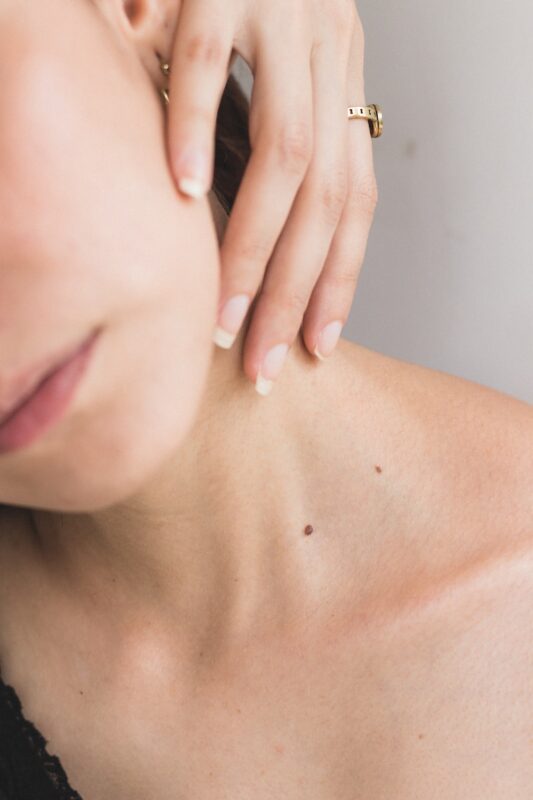Your teenage years are quite interesting as you experience various changes in every aspect of your life. Although some of these changes can be pleasant such as your newfound independence, some aren’t so great. A common unpleasant experience many teens face is the changes they experience in their bodies, especially in their skin. These changes can take a toll on you, affecting your self-esteem and confidence. Fortunately, these skin issues can be resolved if the right steps are taken. Here are seven common skin disorders teens face and how you can resolve them.
- Acne
Discussing the skin disorders you may experience as a teenager without mentioning acne is impossible. In your pubescent years, your body produces high amounts of sebum, an oil that keeps your skin smooth and moisturized. However, this clogs your pores with oil and dead cells, causing pimples. However, when bacteria are found in these clogged pores, acne occurs. Acne can be characterized by hard, painful lumps (or nodules), cysts, papules, whiteheads, and blackheads. Not only are these painful and comfortable, but they can make you more conscious of your appearance, making you feel less confident and reducing your self-esteem. However, there is no need to fret. No matter how bad your acne may seem, it can be resolved. To treat acne, you must be committed and patient, as the process requires consistency and a while to clear. In many cases, over-the-counter medications containing benzoyl peroxide have proven effective. Topical treatments such as retinol that help reduce oil production are also great in treating acne. It would be best to consider daily skincare habits to further reduce acne and prevent it from worsening.
- Oily skin
As mentioned above, the overproduction of oil can cause you to experience an acne breakout. However, this doesn’t necessarily mean that oily skin leads to acne. More often than not, many teens simply deal with acne or with just oily skin. And don’t worry; you will be able to tell the difference. If you’re dealing with just oily skin, you will notice that you do not experience any outbreaks. Untreated oily skin can lead to acne, which can take a lot to treat. To get rid of your oily skin and prevent other skin conditions from arising from this problem, you should consider washing your face regularly. Wash your face at least twice a day. Doing this would take away the excess oil and prevent other skin conditions (such as acne) from arising due to your oily skin. You should also consider purchasing skin care products that help you control oil production, such as salicylic acid, glycolic acid, beta-hydroxy acid, and benzoyl peroxide. Other means of managing and treating oily skin include using bolting papers and medical pads, using an oil-free moisturizer, and avoiding harsh face products. You should also be mindful of what you eat. Fried foods, excess intake of dairy products, red meats, salty foods, and refined carbohydrates can affect the condition, making it oily. Therefore, you should be mindful of what you eat as you try to reduce your skin’s oiliness.
- Dandruff
Have you been experiencing an itchy, dry scalp? Or perhaps you find white flakes in your comb or brush when you run it through your hair? If that’s the case, you are most likely experiencing dandruff. You may have heard several times that a lack of practicing personal hygiene causes dandruff. However, this is far from the truth, as experts have admitted that the cause of this skin condition is unknown. This condition is quite easy to treat. You can remove dandruff from your scalp by brushing or combing it daily. You should also wash your hair regularly using tar-based, selenium sulfide, or zinc pyrithione shampoos or hair treatments. You can also consider using home remedies to treat dandruff, such as apple cider vinegar, aloe vera, or reducing stress.
- Eczema
Research shows that about 9.6 million children under 18 deal with eczema. Eczema is a skin condition that causes dryness and itchiness. It also causes yellow or white scaly patches on the skin that flake off and usually occurs around the elbows, hands, feet, and knees. This skin condition is usually common in younger children but is only seen as you age. Eczema can be triggered and worsened by several components of your daily life, such as the weather, sweat, some foods and drinks, and some clothing material.
Although there is no cure for eczema, there are several ways to manage the condition. For example, experts advise avoiding perfumed moisturizers and mild cleaners. Instead, you should use various medicated creams to relieve your eczema symptoms, such as Bodewell’s Eczema Daily Calming Cream. These creams have been formulated to relieve and manage your itchiness, inflammation, and flare-ups. I
- Excessive sweating
Understandably, you may be wondering why sweating is on the list. However, excessive sweating is a skin condition that several teens deal with. So, how is this different from regular sweat? Sweating is the body’s natural way of cooling down when exposed to heat. However, if you notice you’re experiencing sweat in your hair, palms, feet, underarms, and anywhere else when there’s little to no heat, then you are experiencing excessive sweating or hyperhidrosis. The feeling of sweaty palms and visible sweat-stained clothes can be very embarrassing and make you uncomfortable at social gatherings. However, you can curb this condition to regain your confidence. Antiperspirants are a great tool against excessive sweating. Antiperspirants plug the sweat ducts, preventing perspiration from moving to the surface. Wearing breathable and absorbent materials such as cotton is a great way to minimize excessive sweat. It would help if you also considered avoiding foods that trigger sweat.
- Athlete’s foot
Feet conditions are the worst, and while you may think it’s a problem you would have to face in your older years, that’s not the case. An athlete’s foot is a common skin condition that is a fungal infection that causes the foot to itch, sting, crack or redden. In severe cases, you may see blisters or ulcers. It can be found around the feet, toes, and ankles. The condition usually occurs when your feet are sweaty and dirty. Although this condition is treatable, it can develop into a chronic one, which would flare up from time to time. To avoid this, keep your feet clean and dry, especially before putting on only your socks or shoes. You can treat Athlete’s feet with over-the-counter medication antifungal medication. You can also curb this problem by putting antifungal powder in your socks and shoes.
- Sunburns
Sunburns are not a skin condition limited to teenagers. But, the lack of information can cause your fun tan in the sun to be a terrible one. With summer finally, here, you cannot wait to go out to enjoy the sun; however, you should do so cautiously. Sunburns occur due to overexposure to the direct rays of the sun. Therefore, it is advisable to always apply sunscreen. In addition to protecting your skin from burns, sunscreen reduces the signs of aging and lowers your risk of skin cancer. There are several symptoms of sunburn. For example, there are obvious signs such as redness and warmth in burnt areas. However, some symptoms are more severe. For instance, in cases of a terrible burn, you may experience nausea, headaches, exhaustion, blistering, and swelling.
No matter what skin problem your teen years hit you with, you will always be able to manage it. It is important not to be discouraged by the changes you see. Instead, find ways to resolve it effectively. Visit your dermatologist regularly for advice and solutions to skin problems to ensure you get the right solutions and an accurate diagnosis.




